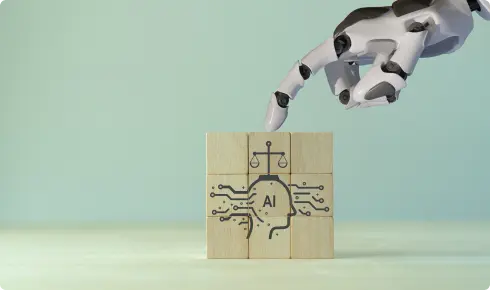Here’s what that means for your business.
Wheneven Sam Altman thinks there is an AI bubble, then there most likely is an AI bubble. But it’s even worse than that. There isn’t just one AI bubble: there are three.
First, AI is almost certainly in what economists call an asset bubble or a speculative bubble. As the name suggests, this is when asset prices soar well above their fundamental value. A classic example of this kind of bubble is the Dutch “tulip mania” of the 17th century, when speculators drove up the price of tulip bulbs to astronomical heights, convinced that there would always be someone willing to pay more than they had.
As I write, Nvidia is trading at 50 times earnings, Tesla at an astounding 200 times, despite falling revenues, while the rest of the Magnificent 7 (Google, Amazon, Apple, Microsoft, and Meta) are enjoying significant boosts thanks to the bets they are taking on an AI-led future. The chances of this not being a bubble are between slim and none—and while Slim hasn’t quite left town, he’s booked his ticket and is packing his bags.
Second, AI is also arguably in what we might call an infrastructure bubble, with huge amounts being invested in infrastructure without any certainty that it will be used at full capacity in the future. This happened multiple times in the later 1800s, as railroad investors built thousands of miles of unneeded track to serve future demand that never materialized. More recently, it happened in the late ’90s with the rollout of huge amount of fiber optic cable in anticipation of internet traffic demand that didn’t turn up until decades later.
Companies are pouring billions into GPUs, power systems, and cooling infrastructure, betting that demand will eventually justify the capacity. McKinsey analysts talk of a $7 trillion “race to scale data centers” for AI, and just eight projects in 2025 already represent commitments of over $1 trillion in AI infrastructure investment. Will this be like the railroad booms and busts of the late 1800s? It is impossible to say with any kind of certainty, but it is not unreasonable to think so.
Third, AI is certainly in a hype bubble, which is where the promise claimed for a new technology exceeds reality, and the discussion around that technology becomes increasingly detached from likely future outcomes. Remember the hype around NFTs? That was a classic hype bubble. And AI has been in a similar moment for a while. All kinds of media—social, print, and web—are filled with AI-related content, while AI boosterism has been the mood music of the corporate world for the last few years. Meanwhile, a recent MIT study reported that 95% of AI pilot projects fail to generate any returns at all.
But what does all this mean for your organization? What should you be doing to respond?
DO THE BUBBLES MATTER?
Bubbles are fine things in bottles of champagne, but in business contexts they are generally viewed as something to be avoided. So, when we see that AI is likely in three bubbles simultaneously, the immediate instinct may be to swerve urgently away from AI.
I recommend resisting that instinct. Two of the three bubbles are largely irrelevant for most organizations and should simply be ignored.
The speculative bubble is the result of a modern version of tulip mania—investors bidding up the price of equities on the hope of future performance. The overheated valuations and crazy multiples are only problems for organizations that are involved in or directly exposed to the financial speculation—and most organizations are not. A market crash may cause broader pain for the economy, but that is a potential environmental issue that all businesses will need to navigate. It should have little direct effect on a carefully planned AI implementation strategy.
And as for the infrastructure bubble, well, if it turns out we really are building too much, the problem will be one of overcapacity, not overvaluation. For most organizations this is not only irrelevant, it may also lead to positive outcomes, because overcapacity will mean falling prices for those who want to use that infrastructure.
This leaves the hype bubble, and this is where things get interesting. The hype bubble does have an important lesson for most organizations, but it isn’t the one we might think—even if 95% of AI pilot projects fail, the issue here isn’t that AI can’t deliver value, but that many companies are approaching the technology in the wrong way.
DOTCOM DEJA VU
I’ve seen this before. I was in the dotcom boom (and bust) of the late ’90s and early 2000s. I saw Pets.com burn through $300 million before imploding, I saw the NASDAQ crashing by 78% and I read the articles by pundits who authoritatively declared that the internet was a fad.
Yet during that same meltdown, Amazon was methodically building fulfillment centers and refining its recommendation algorithms. Google was quietly perfecting search. PayPal was solving payment friction. And thousands of companies were developing their first e-commerce capabilities, with greater or lesser degrees of success.
The point is simple: a thing can be hyped beyond its actual capabilities while still being important (and to be fair to Sam Altman, he also makes this point in the piece quoted above). Just because AI is in a hype bubble does not mean that AI is “fake news” or that there isn’t huge value to be extracted from it. The hype bubble simply means that some people are overexcited about AI—it doesn’t mean that there isn’t something to be legitimately excited about.
I made this argument in the dotcom era and I make it again now. What happened then will happen with AI. When valuations correct—and they will—the same pattern will emerge: companies that focus on solving real problems with available technology will extract value before, during, and after the crash.
In sum, companies with systematic approaches to extracting value from the technology will thrive. What becomes crucial, then, is your approach to capturing that value. So, how do you actually achieve that goal?
THE VALUE CREATION PLAYBOOK
The companies capturing real value follow three pillars of systematic implementation:
Problem-First Architecture starts by mapping organizational friction points. Where do humans waste time on repetitive work? Where do information bottlenecks slow decisions? What processes consistently produce errors? Only after identifying these problems do successful companies consider AI solutions.
Portfolio Balance means mixing time horizons and risk levels. Quick wins (one to three months) might include off-the-shelf tools for document processing. Strategic bets (3 to 12 months) could involve custom solutions for core business processes. Moonshots (more than 12 months) explore new business models. A retailer might implement an inventory chatbot this quarter while developing predictive analytics for next quarter and testing autonomous purchasing agents for next year.
Holistic Integration connects AI initiatives to each other and to business strategy. Successful companies break down silos between IT, operations, and business units. They create feedback loops between projects. A manufacturing company’s quality control AI feeds data to predictive maintenance AI, which informs supply chain AI. Each system makes the others smarter, creating compound value that isolated pilots never achieve.
This is how you build value regardless of bubbles: systematically, purposefully, and starting today.
BENEFITTING FROM BUBBLES
Far from being a threat, the AI bubble might be the best thing that could happen to pragmatic adopters. Consider what speculative excess delivers: billions in venture capital funding R&D you’d never justify to your board; the world’s brightest minds abandoning stable careers to join AI startups, working on tools that you’ll eventually be able to use; infrastructure being built at a scale no rational actor would attempt, driving down future costs through overcapacity.
While investors bet on which companies will dominate AI, you can cherry-pick proven tools at competitive prices. While speculators debate valuations, you will be implementing solutions with clear ROI. When the correction comes, you’ll also be able to benefit from fire-sale prices on enterprise tools, seasoned talent seeking stability, and battle-tested technologies that survived the shakeout.
The dotcom bubble gave us broadband infrastructure and trained web developers. The AI bubble will leave behind GPU clusters and ML engineers. The smartest response isn’t to avoid the bubble or try to time investments in it perfectly. It is to let others take the capital risk while you harvest the operational benefits. The bubble isn’t your enemy. If you play your cards strategically, it can be a major benefactor.
A VALUABLE DISTRACTION
Perhaps the greatest gift of the bubble discourse is the distraction it provides. While commentators debate whether Nvidia is overvalued and conferences overflow with “AI bubble” panels, something interesting happens: the noise creates perfect cover for serious operators to build lasting value.
This psychological dynamic creates genuine competitive advantage. The bubble debate gives skeptics intellectual permission to wait—after all, why pursue that interesting AI project if the whole AI thing will inevitably crash? Meanwhile, companies quietly pursuing systematic AI implementation face less competition for talent, less pressure on timelines, and less scrutiny of their initiatives. The louder the bubble talk, the more space opens for those willing to take a methodical approach to building value.
Original article @ Fast Company.















